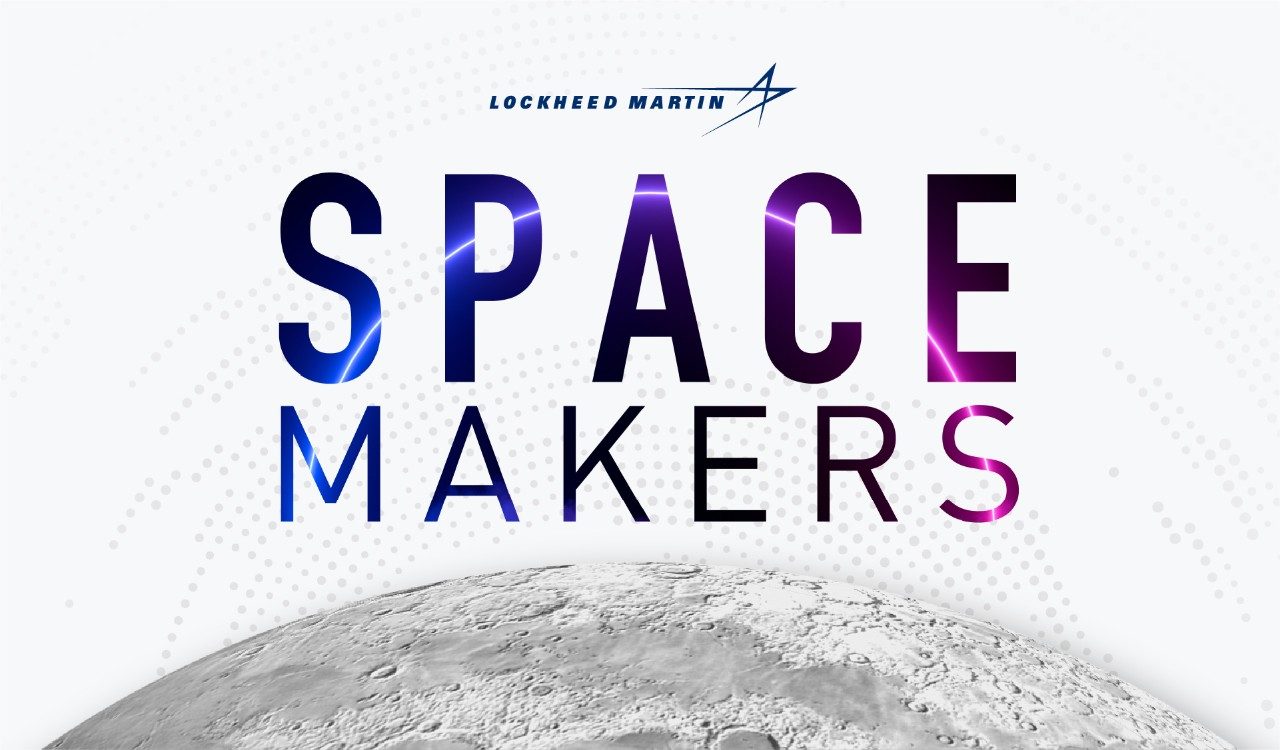At Lockheed Martin, our engineers are making the impossible a reality by using vision and innovation to push the boundaries of the missions we support and the rapid prototyping we tackle every day.
Leveraging digital transformation and business reinvention, we deliver forward-leaning solutions for our customers and their missions – and help map a bold new path for the future of space.
The Kármán line is the altitude above the Earth which separates Earth from space.
“Here at Lockheed Martin we're blurring that line,” Lockheed Martin Space Vice President of Business Innovation, Transformation and Enterprise Excellence Johnathon Caldwell says. “We're redefining what the Kármán Line can be. We're bringing transformative digital technologies to the business and missions of Space.”
Using Digital Tools to Transform
“It’s going to take more than just human ingenuity,” Caldwell says. “It's about taking the technologies that are terrestrial, the things on Earth that we enjoy every day, and putting them into the missions that we operate. And in that way, we blur that line about what’s earthbound and what's out in space.”
These technologies include:
- Artificial intelligence (AI) “will help people do their jobs better and take the burden of everyday tasks off them, so they can focus their creativity on solving tough challenges on new platforms.”
- Digital twins will mean having a digital replica of “everything you see represented in the physical world and the ability to pull in all the data to be proactive rather than reactive when executing a mission.”
- Generative design and additive manufacturing will help make parts, build structures, and create composites and other materials that will allow platforms to “self-heal” in the future.
- Cybersecurity practices already applied on the “satellites we build will be increasingly used for space-based networks.”
“As we become more dependent on digital infrastructure over the course of the next 50 years, we have to think of new and innovative ways to connect these digital threads,” Caldwell says. “By applying ‘systems thinking’ – and looking at all the interdependencies – we can make the most of not only the technology itself, but the processes we all use to deliver new capabilities. Who knows what it could look like 50 years from now, but it is exciting!”
Data is Foundational
Data strategy provides the foundation for many of these technologies.
“Scaling the use of data – and being truly data powered – is what is driving the continued evolution of things like AI and cloud-computing,” Caldwell says. “This is a key focus area for Lockheed Martin – putting the right data architecture in place for our employees and our customers to bring the right data at the right time to the right people.”
For instance, with accurate and detailed data feeding a machine learning algorithm or a more robust AI platform, there is the potential for systems to self-heal.
“If we look at something far in the future like a Lunar economy, a building on the Moon could have the right data and AI assistance to track essential functions like water usage, available solar energy, food supply, location of astronauts or colonists. This could even be scaled to keep people healthy – having a ‘digital doctor’ provide predictive solutions to supplement the work of human physicians.”

‘Virtuous Cycle’ Comes Full Circle
The pioneers of space built many of the underlying technologies to explore our solar system, send astronauts to the Moon, and protect warfighters on Earth. Those technologies, in turn, found uses back on Earth – things like the first computer chips and early versions of the internet and super computers.
Caldwell wants that “virtuous cycle” to come full circle so that “the technologies we develop to keep people safe or to do missions in space come back and make our world a better place.”
“Today, we are actively applying new tools for modeling, digital engineering and ways to exploit extensive data coming off of sensors,” Caldwell says. “If we can scale these proven applications, we have the opportunity to help shape and provide benefit to other industries. For example, we are working to build digital twins of our platforms to promote long-term sustainment of our systems.”
That same model could be applied to, say, the construction industry. “You could have the same sensors embedded in a building to then warn people of imminent catastrophes or failures. As we bring the technology we use in space back to Earth, we can make our understanding of our own world that much better.”
The Human Side of Space
As more humans travel to space as explorers, tourists or even permanent residents, technology and biology will intersect. Humans will need to learn more about how their bodies work in space and how to protect themselves from the harsh environment of deep space. And it’s another opportunity for scientists and other industries to promote the virtuous cycle and further blur the line between Earth and space, Caldwell believes.
“What if our technologies start to look more like our biologies? That’s the whole field of how we use the best of what nature’s already put together,” he says. “(What) if that catalyst of space travel can help us understand more about our bodies and, potentially, how to make our bodies healthier, how to fight and cure cancer, how to make the environments we create sustainable? The next 50 years will see that convergence and benefits grow even more.”

Connection as the Cornerstone
One of the cornerstones at Lockheed Martin is connecting people, from the civilian to the warfighter to the astronaut. We build systems like GPS and protected communications satellites that not only make our lives easier but connect us to the world around us. That reliance on connectivity is not unique to Earth, it is a necessity in space.
“GPS is something you might take for granted here on Earth today,” Caldwell says, “but I guarantee you if you're that first explorer on the surface of Mars, you're going to want some of those technologies to keep you safe and to keep you connected to the people who matter most to you here at home.”
Pulling this thread of connectivity is just as relevant in business operations – to make these missions and the future of space a reality. The digital future of Lockheed Martin is about creating a digitally connected business and leveraging the information across teams and the supply chain to deliver the most affordable, resilient and mission-critical solutions.
More From Our LM Space Thought Leaders
Listen to the Podcast
Get an inside look into some of the most challenging and innovative missions






